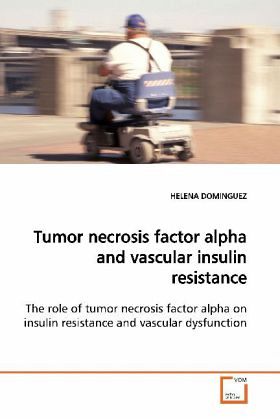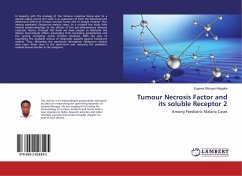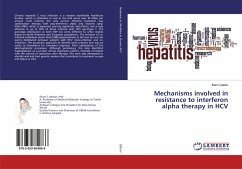
Tumor necrosis factor alpha and vascular insulin resistance
The role of tumor necrosis factor alpha on insulin resistance and vascular dysfunction
Versandkostenfrei!
Versandfertig in 6-10 Tagen
32,99 €
inkl. MwSt.

PAYBACK Punkte
16 °P sammeln!
Persons with type 2 diabetes develop diffuse atherosclerosis and consequent organ damage. In patients with atherosclerotic disease as well as in patients with type 2 diabetes there is an increased production and increased blood levels of the cytokine TNF- . In the surroundings of atherosclerotic plaques there is accumulation of TNF- , especially around culprit lesions. Atherosclerotic plaques are attached to the endothelium, which is the innermost layer of the vessels. Among other functions the endothelium helps to maintain a relaxed vascular tone by producing nitric oxide (NO). It has been sh...
Persons with type 2 diabetes develop diffuse
atherosclerosis and consequent organ damage. In
patients with atherosclerotic disease as well as in
patients with type 2 diabetes there is an increased
production and increased blood levels of the
cytokine TNF- . In the surroundings of
atherosclerotic plaques there is accumulation of TNF- , especially around culprit lesions.
Atherosclerotic plaques are attached to the
endothelium, which is the innermost layer of the
vessels. Among other functions the endothelium helps
to maintain a relaxed vascular tone by producing
nitric oxide (NO). It has been shown that TNF-
impairs the intracellular signal that is initiated
when insulin binds to its receptors, what results in
insulin resistance. Since one of the endpoints of
the insulin signal in endothelial cells is the
activation of eNOS, that catalyzes NO production, it
is reasonable to believe that TNF- has a
substantial role in the development of
atherosclerosis in insulin-resistant states. The
purpose of the studies described in this book is to
contribute to the clarification of this role.
atherosclerosis and consequent organ damage. In
patients with atherosclerotic disease as well as in
patients with type 2 diabetes there is an increased
production and increased blood levels of the
cytokine TNF- . In the surroundings of
atherosclerotic plaques there is accumulation of TNF- , especially around culprit lesions.
Atherosclerotic plaques are attached to the
endothelium, which is the innermost layer of the
vessels. Among other functions the endothelium helps
to maintain a relaxed vascular tone by producing
nitric oxide (NO). It has been shown that TNF-
impairs the intracellular signal that is initiated
when insulin binds to its receptors, what results in
insulin resistance. Since one of the endpoints of
the insulin signal in endothelial cells is the
activation of eNOS, that catalyzes NO production, it
is reasonable to believe that TNF- has a
substantial role in the development of
atherosclerosis in insulin-resistant states. The
purpose of the studies described in this book is to
contribute to the clarification of this role.












